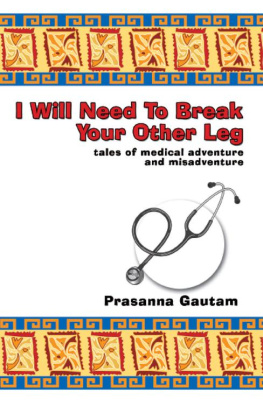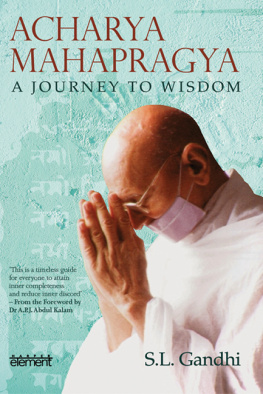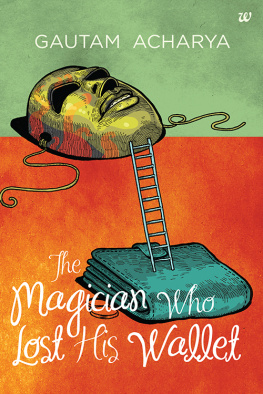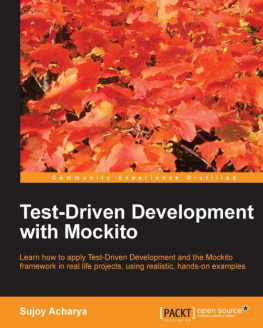Prasanna Kumar Acharya - Manasara
Here you can read online Prasanna Kumar Acharya - Manasara full text of the book (entire story) in english for free. Download pdf and epub, get meaning, cover and reviews about this ebook. genre: Art / Science. Description of the work, (preface) as well as reviews are available. Best literature library LitArk.com created for fans of good reading and offers a wide selection of genres:
Romance novel
Science fiction
Adventure
Detective
Science
History
Home and family
Prose
Art
Politics
Computer
Non-fiction
Religion
Business
Children
Humor
Choose a favorite category and find really read worthwhile books. Enjoy immersion in the world of imagination, feel the emotions of the characters or learn something new for yourself, make an fascinating discovery.
- Book:Manasara
- Author:
- Genre:
- Rating:4 / 5
- Favourites:Add to favourites
- Your mark:
- 80
- 1
- 2
- 3
- 4
- 5
Manasara: summary, description and annotation
We offer to read an annotation, description, summary or preface (depends on what the author of the book "Manasara" wrote himself). If you haven't found the necessary information about the book — write in the comments, we will try to find it.
Manasara — read online for free the complete book (whole text) full work
Below is the text of the book, divided by pages. System saving the place of the last page read, allows you to conveniently read the book "Manasara" online for free, without having to search again every time where you left off. Put a bookmark, and you can go to the page where you finished reading at any time.
Font size:
Interval:
Bookmark:
The Manasara, English translation: one of the monumental works on Indian architecture, sculpture and creative arts. The subject-matter of this work is commonly know as Vastu or Shilpa-Shastra. It is dated to the 5th century A.D. or earlier.This edition of the Manasara is translated from the Sanskrit based on eleven available manuscripts and inclu...
This page describes history of publication which is Preface 1 of the Manasara (English translation): an encyclopedic work dealing with the science of Indian architecture and sculptures. The Manasara was originaly written in Sanskrit (in roughly 10,000 verses) and dates to the 5th century A.D. or earlier.
Architecture of , Sir Austin Chamberlain, for the use of the writer. Except one, all other manuscripts are fragmentary and none contains any commentary, drawings, diagrams or sketches. The buildings of the time, religious, military, or residential, do not appear to exist in their entirety for a ready reference. In 1838 Ram Raz based his Essay on Architecture of the Hindus on a few chapters of a single fragmentary manuscript. In recent years several other scholars have quoted extracts from one or other of the manuscripts, but no one, including Ram Raz, attempted the translation of any passage. A few Sanskrit texts of architecture have also been printed in the recent years, but none has been translated into English or elucidated in any other language, Indian or European.
It was the great Director General of Archaeology, Sir John Marshall, who conceived the idea, and advised Lord Pentland, the then Governor of , then Librarian of the India Office, London, that I had been working for some time as a Government of India Slate scholar on the subject in consultation with Mr. E. B. Havell and under the guidance of Dr. L. D. Barnett of the British Museum, Dr. Thomas himself, and Dr. J. Ph. Vogel of Leyden. But the unfortunate coincidence of His Excellencys retirement and Sir Johns absence from India at the time of my arrival in Madras upset the preliminary arrangement made for the publication from Madras. On my appointment to the Indian Educational Service in the United Provinces, Sir Claude F. de la Fosse, the then Director of Public Instruction, and the first Vice-Chancellor of the reconstructed Allahabad University, took up the matter with scholarly interest and induced the great educationist Governor, Sir Harcourt Butler, to sanction the publication on behalf of the United Provinces Government, through the Oxford University Press.
The work of seventeen yearswhich Professor E. J. Rapson of Cambridge University correctly predicted to be a lifes undertakinghas thus reached its present destination. It is, however, not the end, but the beginning, of a new line of Indology which, it may perhaps be hoped, is likely to prove not merely of cultural and historical interest, but possibly of some practical benefit to the country and to the nation. Our architectural policy of the past few hundred years, based as it has been on foreign imitation, and in an entirely different climate and soil, has not proved quite successful in regard to temples and humble dwelling-houses, if not in regard to public edifices also. That the sole object of a work like the Mnasra was primarily and ultimately practical in giving general as well as special guidance to the builders of that time, as also of the future generations, will be clear even to the casual reader of the book. Whether or not the extant structures which have been restored to the nation by the activity of the Archaeological Department, or which having defied the effect of time and weather, are yet standing almost in their original grandeur, will indicate the application of the rules and regulations, or at least the methods and principles laid down in the Mnasra, remains to be proved. If, after making allowance for existing conditions and requirements, the methods and principles, as well as the rules and regulations laid down in the standard treatise, are found to be scientifically sound and suitable for modem buildings, big and small, they may be experimented with, and the solution of the problems relating to its textual imperfection and historical uncertainty may be left to the care of those whose mission is the elucidation of the past culture.
The preliminary accounts of the subject published in the writers Dictionary of Hindu Architecture and Indian Architecture accordingto Mnasra have awakened a world-wide interest as will be seen from the extracts from reviews and opinions appended at the end of the present volume. This has emboldened me to publish as complete a record as is at present practicable. But the reader must understand that these volumes do not claim to be other than provisional. In the nature of things it could not be otherwise. These volumes may open up a new line of Indian achievement and may lead to a task which is just begininng. Fresh materials, facts, and figures are likely to come to light. In such conditions any approach to finality is out of the question.
This page describes preparation of the plates which is Preface 2 of the Manasara (English translation): an encyclopedic work dealing with the science of Indian architecture and sculptures. The Manasara was originaly written in Sanskrit (in roughly 10,000 verses) and dates to the 5th century A.D. or earlier.
Owing to the defective nature of the text, which has been shown elsewhere, one can hardly be perfectly sure of the interpretation. An elaborate effort, involving great expenditure of time, money, and convenience, was made to get into contact with the so-called traditional builders the south, in the Orissan countries, in the Indian States of Rajputana, , in the Frontier Provinces, and in the Hill States, in company with trained and experienced engineers, architects, and interpreters, in the vain hope of getting some light from salats. These salats are stated to build in accordance with an ancient tradition which. they claim, to have inherited orally in some cases, but mostly from some fragmentary manuscripts that they have frequently failed to interpret.
Another effort, extending over many years and made through many agencies, both official and non-official, to engage the services, against tempting payment, of teachers or advanced students of the few schools of arts and architecture in the Indian States and elsewhere, mostly under the Government, ended also in failure.
In these circumstances, when it was about to be finally decided to publish this first edition without any illustrations, Mr. H. Hargreaves, the then Director General of Archaeology, in camp at . He very definitely disagreed with my intention of bringing out such a volume without illustrations, and readily accepted my request to place at my disposal the services of Mr. S. C. Mukherji, b.a., g.d.arc., a.i.i.a., then a research scholar of the Archaeological Department, whose name had been mentioned to me by his (Mr. Hargreaves) personal assistant, Mr. B. T. Mazumdar, and who was subsequently recommended by Mr. R. L. Bansal, a very enthusiastic engineer of the Public Works Department. As an experienced officer of his exalted position, Mr. Hargreaves stipulated, however, that Mr. Mukherjis services might be available only for a limited period and that I must be present while Mr. Mukherji would be working at his (Mr. Hargreaves) office at Simla, obviously to get the fullest advantage of a joint effort of his whole department and my own.
Mr. Mukherji himself undertook the task with the greatest possible enthusiasm. He had graduated with branch of the Archaeological Department, wherefrom Mr. R. L. Bansal used to take books in connexion with the measured drawings he had been making to illustrate the preliminary chapters of the
Font size:
Interval:
Bookmark:
Similar books «Manasara»
Look at similar books to Manasara. We have selected literature similar in name and meaning in the hope of providing readers with more options to find new, interesting, not yet read works.
Discussion, reviews of the book Manasara and just readers' own opinions. Leave your comments, write what you think about the work, its meaning or the main characters. Specify what exactly you liked and what you didn't like, and why you think so.












